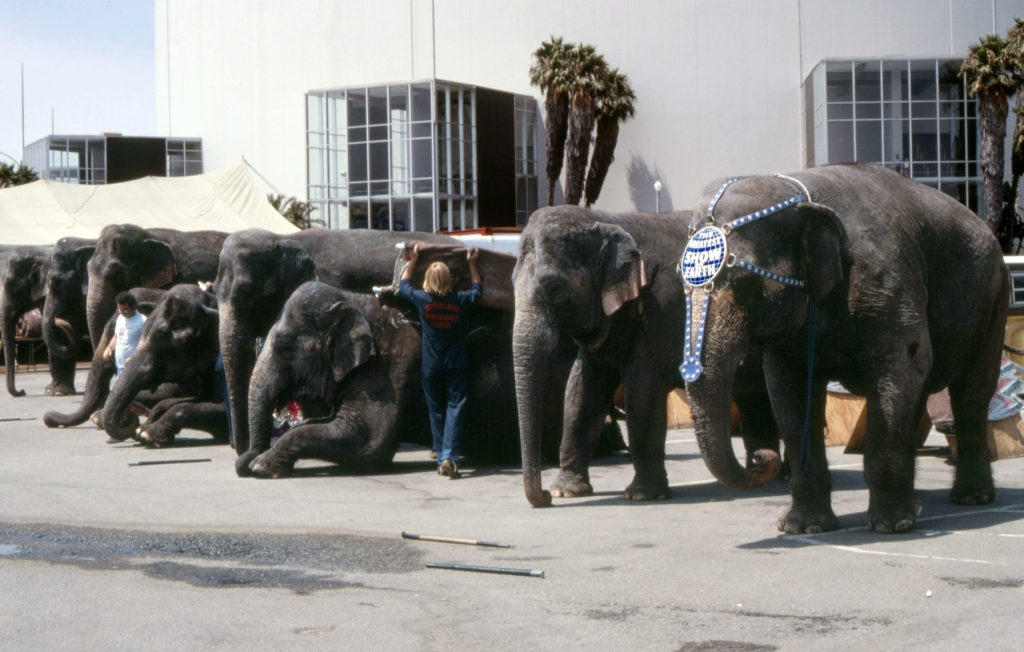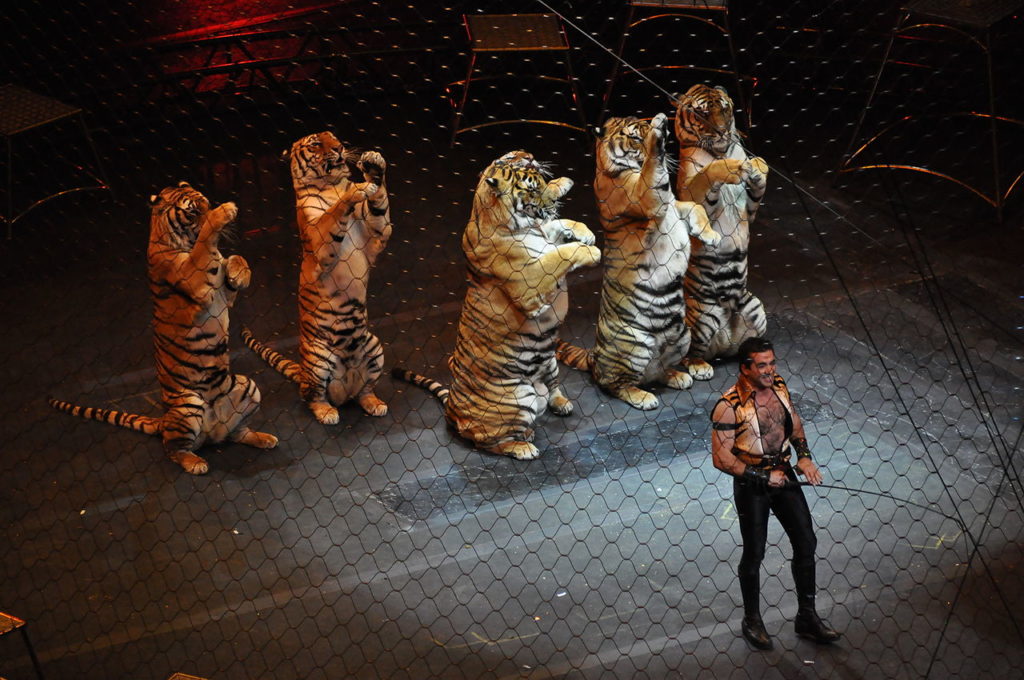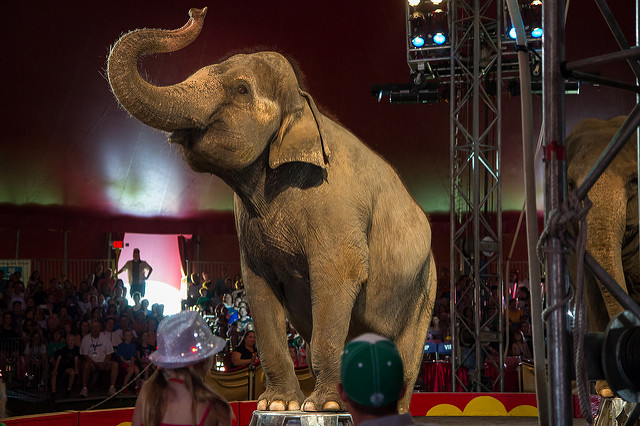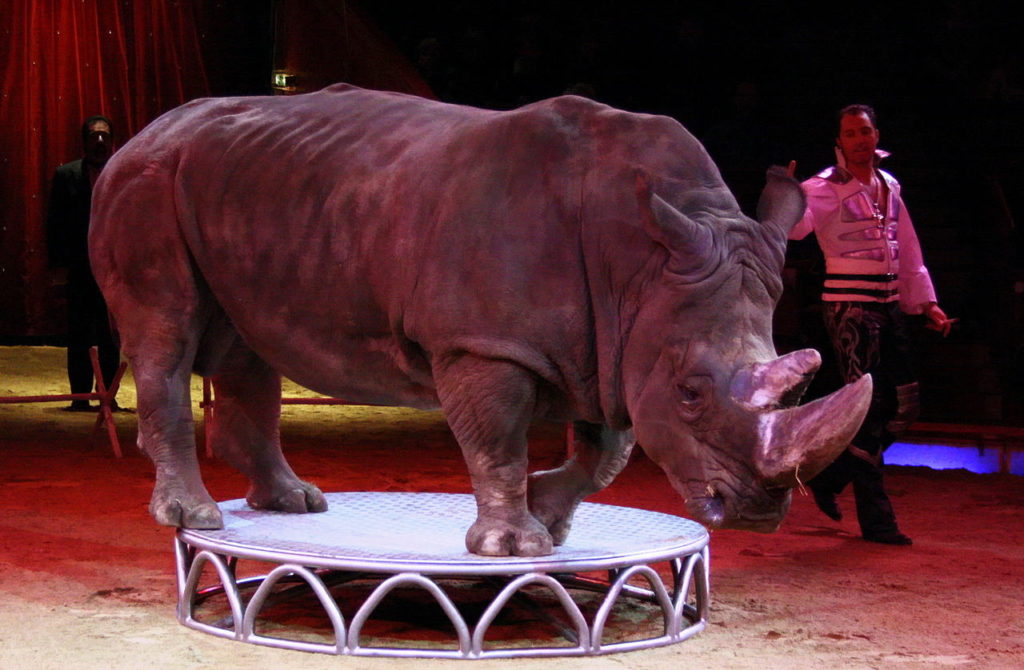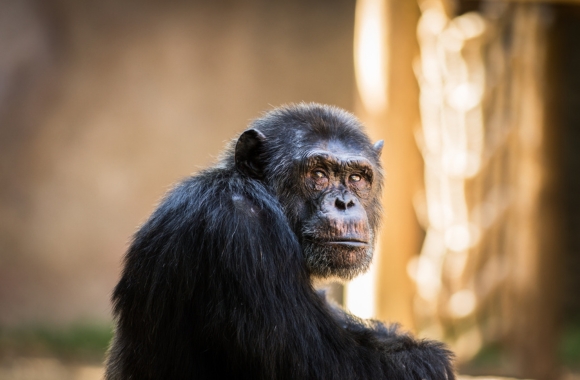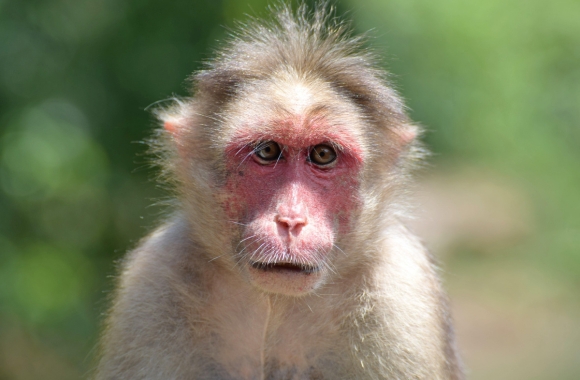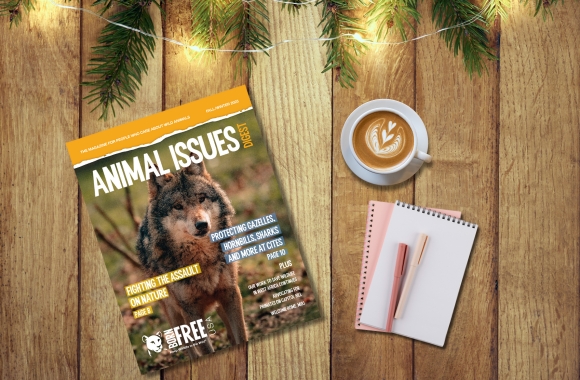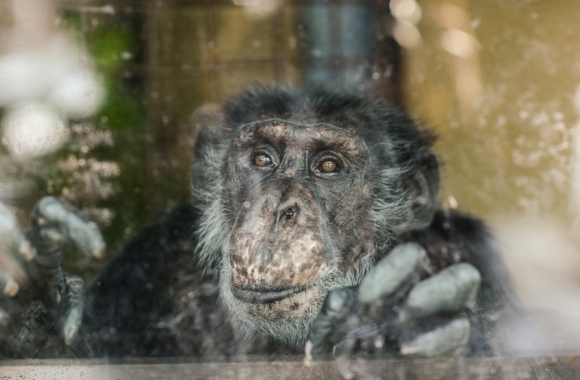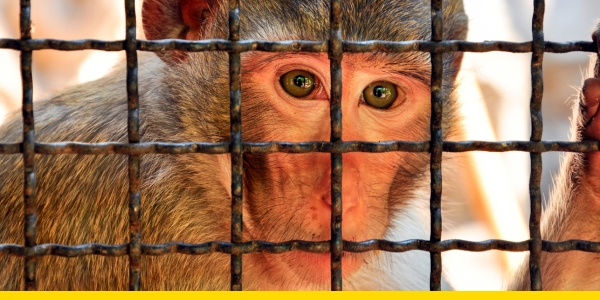Protect wild animals from circuses and other exploitation by making a donation to Born Free USA!
What’s Wrong with the Circus?
Cruel “training” techniques
Animals in circuses are forced to perform frightening, unnatural, and even painful tricks, night after night. Circus representatives often claim that only “positive reinforcement” is used in handling animals – and this may indeed be the style of interaction that audiences see in the ring and in carefully-controlled public tours – but it is standard circus industry practice to use bullhooks, a steel rod resembling a sharpened fireplace poker that is used to prod, hook, and strike elephants, to dominate and control them through fear, pain, and injury. Using varying amounts of pressure, the sharp tip and hook are pushed into sensitive spots on an elephant’s body, while the handle is used as a club to strike areas where little tissue separates skin and bone.
“I was shocked, anew, with the degradation the animals suffer, and the pleasure the trainers take in the domination… these ridiculous acts. I wonder how much longer these archaic sideshows can last. The audience barely clapped during the animal performances, as the men slapped animals on the face with sticks and snapped the whip to make them move. The lions, overweight from a life immobile in small cages, ‘perform’ grudgingly…”
NJ State Senator Raymond Lesniak referring to bill to ban exotic animals from circuses, carnivals, and fairs.
